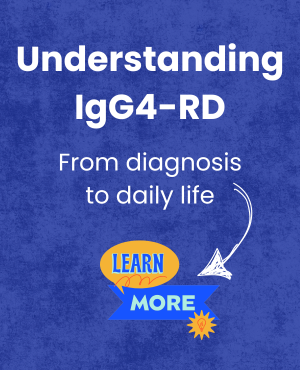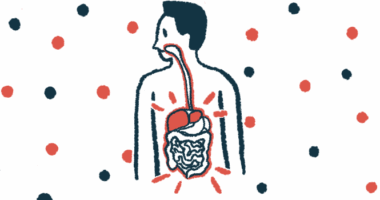Sinonasal involvement in IgG4-RD needs recognition: Review study
Researchers say eye, nasal symptoms should be added to diagnostic criteria

Sinonasal involvement, with symptoms affecting the nasal passages and surrounding air-filled skull cavities (sinuses), may be an under-recognized presentation of immunoglobulin G4-related disease (IgG4-RD), according to a review study.
Nasal and eye-related symptoms were common in patients with sinonasal involvement, though many cases also involved other organ systems considered more typical of the disease and included in its diagnostic criteria, the study found.
Doctors should be aware of possible sinonasal involvement, and a multidisciplinary care team should always be involved in diagnosing and treating IgG4-RD, according to the scientists.
“Familiarity with common presentations of IgG4RD and related diagnostic elements is critical to the diagnosis and management of all involved sites,” the researchers wrote.
The study, “Sinonasal Presentations of Immunoglobulin G4-Related Disease: A Scoping Review,” was published in The Laryngoscope.
Pancreas, lymph nodes among commonly affected organs
IgG4-RD is a body-wide disease wherein immune cells, including ones that produce immunoglobulin G4 (IgG4) antibodies, infiltrate tissues and cause inflammation, scarring, organ swelling, and the formation of tumor-like masses. This can eventually damage organs and impair their functions.
These disease processes can happen in virtually any organ, but certain ones — including the pancreas, salivary glands, tear glands, retroperitoneum (a part of the abdominal cavity), and lymph nodes (immune structures) — are more commonly affected.
A 2011 diagnostic criteria statement was based on three factors: swelling or tumor-like masses, high blood IgG4 levels, and/or marked immune cell infiltration and tissue scarring with strong involvement of IgG4-producing plasma cells, a type of immune cell.
The latest set of IgG4-RD diagnostic criteria, developed by the American College of Rheumatology (ACR) and the European League Against Rheumatism (EULAR) in 2019, combines a greater number of findings and defines that the first step involves assessing the involvement of at least one of 11 possible organ systems.
“Interestingly, sinonasal manifestations of IgG4-RD were not included” in this list, the researchers wrote, even though many cases of sinonasal involvement have been reported.
To learn more, the pair of scientists systematically reviewed studies published up to August 2023 describing cases of sinonasal manifestations of IgG4-RD. A total of 80 studies, covering 145 IgG4-RD patients with sinonasal symptoms, ages 13-83, were included in the final analysis. All but one study used the 2011 diagnostic criteria.
The most commonly reported early symptoms were generalized nasal complaints (63.44% of patients), including obstruction, pain, congestion, crusting, nosebleed, runny nose, and smell loss.
The second most common early symptoms were vision- or eye-related (37.93%), which could be related to the proximity of the sinuses to the eye sockets or simultaneous eye socket involvement, according to the authors.
Multiple diagnostic tools, including tissue biopsy, imaging, and blood tests, were used to identify IgG4-RD in all patients. A little over a third (34.4%) had undergone pre-biopsy nasal endoscopy, where a thin tube with a camera is inserted into the nose to examine the nose and sinuses.
Involvement of at least one organ system outside the sinonasal region was common, with 73% of patients meeting ACR/EULAR classification criteria. Nearly half (47.5%) showed involvement of other head and neck structures, 8.2% had involvement of areas outside the head or neck, and 17.9% had both.
The scientists noted that for those with involvement outside of the sinonasal region, reaching an IgG4-RD diagnosis based on current criteria could be easier. But for those with only obvious sinonasal disease (27% in this study), it could be more difficult.
“If sinonasal disease that could be consistent with IgG4-RD is identified, it would be reasonable to clinically investigate if other typical organ systems are involved as well,” the researchers wrote.
Most people (80%) were treated with body-wide corticosteroids, the usual first-line IgG4-RD therapy. Some patients also received other immunosuppressive medications, and 31.7% had surgical intervention. A minority (4.8%) did not receive any treatment.
The majority of patients (80%) experienced clinical improvements with treatment, and 58.6% saw complete symptom resolution. Some 15.1% experienced disease recurrence a mean of nearly seven months after treatment started, although most improved again after restarting treatment.
“We feel that this study demonstrates the frequent sinonasal involvement of IgG4-RD and that there should be consideration in updating the ACR/EULAR classification criteria,” the researchers wrote, noting that exclusion of these symptoms “may lead to underdiagnosis or delayed diagnosis in these cases.”
Because of the many ways IgG4-RD can present itself, proper diagnosis and treatment, no matter the manifestations, should always rely on a well-rounded care team, the duo noted.
“Involvement of multi-disciplinary care, particularly rheumatology, is essential given that [body-wide] therapies such as corticosteroids and other immune-modulating drugs represent the most effective treatment strategy,” the researchers concluded.






